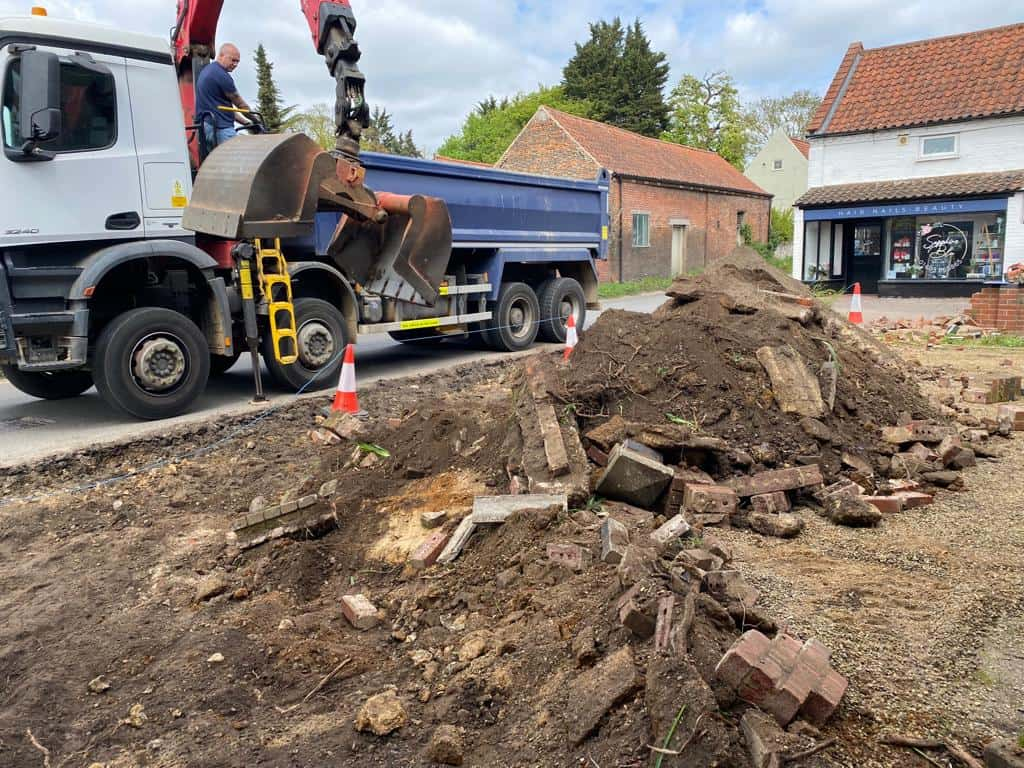What Causes Tarmac to Fail Prematurely?
Introduction
Tarmac has long been a popular choice for driveways across the UK, offering a sleek finish and impressive durability when correctly installed. However, like any surfacing material, it’s not immune to failure. What often surprises homeowners is just how quickly a seemingly solid tarmac surface can begin to show signs of wear — sometimes within just a few years.
At Haverhill Driveways, we understand the frustration that comes with premature surface failure. The good news is that most of these issues are preventable. In this article, we’ll explore the key factors that contribute to early tarmac breakdown, and what steps can be taken to ensure a longer-lasting result.
1. Poor Base Preparation
A weak foundation leads to surface failure
One of the most common causes of premature tarmac failure is inadequate base preparation. A driveway is only as strong as the ground beneath it. If the sub-base is unstable or poorly compacted, the tarmac will begin to sink, crack or deform over time.
Common base issues include:
- Inadequate depth of excavation
- Poorly compacted materials
- Use of substandard aggregate
- Lack of drainage planning
At Haverhill Driveways, we always stress the importance of getting the groundwork right — it’s the cornerstone of a successful, long-lasting installation.
2. Incorrect Thickness of Tarmac Layers
Thinner doesn’t mean better
Tarmac is laid in layers, and each one plays a role in the surface’s overall performance. When the top layer (the wearing course) is too thin, it lacks the strength to withstand the constant pressure of vehicles and footfall.
What can go wrong:
- Cracks appearing within months of installation
- Indentations forming under tyre tracks
- Surface degradation due to weak structure
Properly laid tarmac should be of adequate thickness, matched to the intended use of the driveway — whether that’s light domestic traffic or frequent, heavy vehicle use.
3. Insufficient Drainage
Water is tarmac’s worst enemy
Standing water is one of the most damaging forces to any paved surface. If your driveway does not drain properly, rainwater can seep into the tarmac and the base layer below, weakening the entire structure and accelerating wear.
Signs of drainage problems:
- Pools of water remaining after rain
- Cracking caused by freeze–thaw cycles
- Surface bubbling or lifting
We always advise incorporating a proper fall (slope) into every installation. At Haverhill Driveways, we tailor every project to the landscape to avoid water accumulation wherever possible.
4. Low-Quality Materials
Not all tarmac is created equal
Using poor-quality materials during installation is a recipe for early failure. Low-grade bitumen, contaminated aggregates, or poorly mixed tarmac can all result in a weaker surface that degrades far sooner than it should.
Risks of low-grade materials:
- Reduced bonding strength
- Susceptibility to crumbling and cracking
- Shorter overall surface lifespan
Choosing a professional contractor who uses trusted suppliers is essential. At Haverhill Driveways, we only work with materials that meet industry standards for performance and longevity.
5. Excessive or Heavy Use Without Reinforcement
Know your traffic levels
While tarmac is a strong and flexible material, it still has its limits. Domestic driveways that experience heavy use from larger vehicles — such as vans, caravans, or delivery lorries — may begin to deform if they haven’t been designed for that level of stress.
Potential outcomes:
- Surface indentations from tyres
- Rutting along wheel paths
- Cracking from overloading
Heavier use requires a thicker wearing course and a more robust base — something we always account for during planning at Haverhill Driveways.
6. Lack of Maintenance
Even the best surfaces need a little care
Although tarmac is generally low maintenance, it’s not maintenance-free. Small cracks or holes that are ignored can grow into larger problems over time, especially during periods of heavy rainfall or frost.
Basic maintenance tasks:
- Clearing debris and moss from the surface
- Monitoring for early signs of wear
- Prompt repair of minor cracks or edges
- Avoiding oil or chemical spills
Regular inspections help extend the life of your driveway and preserve its clean appearance for years to come.
Conclusion
Premature tarmac failure is rarely down to bad luck — it’s usually the result of one or more preventable factors. Whether it’s poor base preparation, drainage issues, or subpar materials, the root causes can be addressed with proper planning, skill, and attention to detail.
At Haverhill Driveways, we’re committed to delivering long-lasting, high-quality tarmac surfaces built for the demands of everyday life in Suffolk. If you’re considering a new driveway or concerned about the condition of your current one, get in touch with our experienced team. We’ll ensure your surface is built to last — not just to look good for a season.
Call us on: 01440 840 590
Click here to find out more about Haverhill Driveways
Click here to complete our contact form and see how we can help with your driveway needs.

